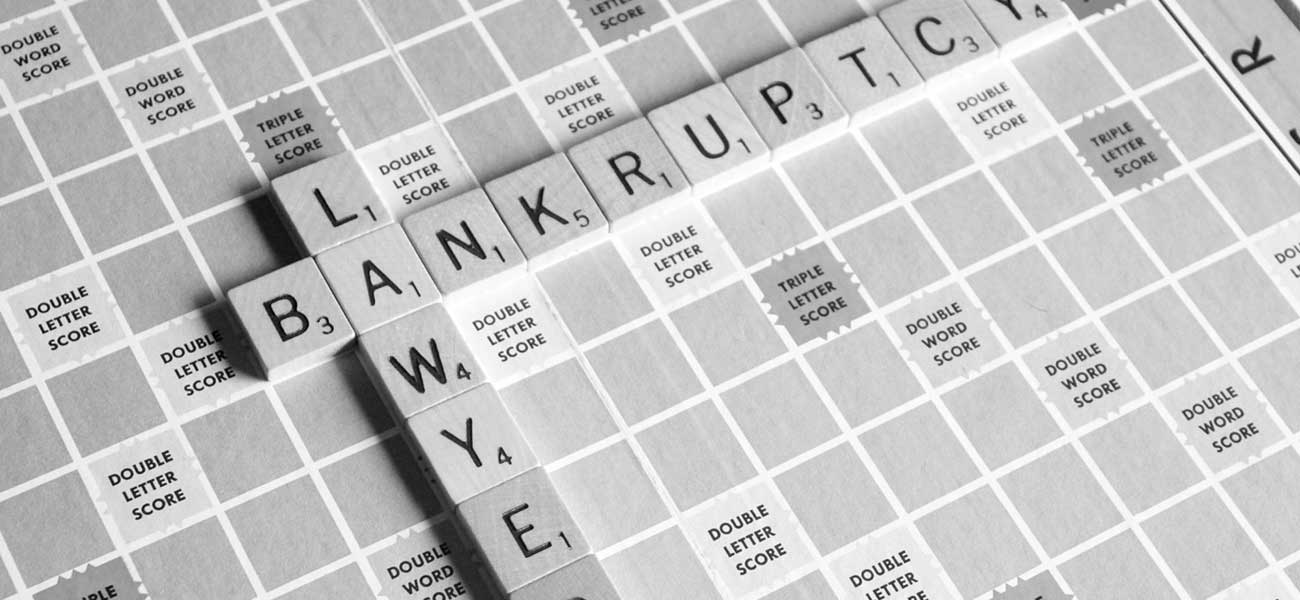By Himanshu Handa, Associate (November 15, 2020)
Presently, India does not have a clear legal framework to deal with cross border insolvency and the Ministry of Corporate Affairs plans to introduce draft chapter on cross border insolvency under the Insolvency & Bankruptcy Code, 2016 (IB Code) as it issued a public notice inviting suggestions and comments on the same. The chapter on cross border insolvency would be generally based on the United Nations Commission on International Trade Law Model Law on Cross Border Insolvency (the “UNCITRAL Model Law”)1. On 16th November 2017, Government of India also appointed ‘Insolvency Law Committee2’ headed by Secretary of Ministry of Corporate Affairs (MCA) to give recommendations on adopting the Model Law in India.
This article will discuss the complexities of cross-border insolvency in the present Indian context, the article will further set out the broad principles of the UNCITRAL Model Law and implication of cross border insolvency provisions in India. This article will further try to define the effects, advantages, disadvantages, objective, implementation and application of the model law in the Indian context.
INTRODUCTION
The UNCITRAL Model Law on Cross-Border Insolvency (Model Law)3 was approved by the United Nations General Assembly through a resolution in 1997, and it aims to resolve and manage international insolvency. It was passed as a model law and not a convention in order to give greater flexibility to nations for adopting the same into their local laws. Model Law is the product of lengthy deliberations and it allowed countries to exclude, alter or include certain provisions, thereby giving the choice to adopt the model law in the manner they deem fit for their domestic convenience. 44 countries have implemented the Model Law, including the United Kingdom (UK), the United States of America (USA), Japan, South Korea and Singapore. It was identified as a framework, which was approved by UNCITRAL by consensus in 1997 and since then it has been accepted and recognized globally.
The Insolvency and Bankruptcy Code, 2016 (IB Code) is at a nascent stage in India and it is frequently getting fine-tuned and amended with experiences and learning. While the opportunities are abundant, one needs to be diligent and cautious in handling Corporate Insolvency Resolution Processes (CIR Process) as the law, rules, procedures and practices are evolving continuously.
PREVAILING SCENARIO IN INDIA
At present, the IB Code is silent on the position of foreign creditors and their right to approach National Company Law Tribunal (NCLT) to initiate corporate insolvency proceedings. However, the Hon’ble Supreme Court in Macquarie Bank Limited v. Shilpi Cable Technologies Ltd4 set a precedent that foreign creditors shall have the same right as available to a domestic creditor to initiate and participate in Corporate Insolvency Resolution Process under IB Code. The Hon’ble Supreme Court in the above case expanded the definition of ‘person’ under section 3(23)(g) to include persons residing outside India.
As per the recommendations of the Joint Committee, the present cross- border insolvency related provisions were included under sections 234 and 235 of the IB Code, A bilateral agreements is required to be entered with other countries to administer the cross- border ramifications of insolvency proceedings. Doctrine of reciprocity is applicable in this process, whereby National Company Law Tribunal (NCLT) or the authorized court may issue letters of request to a foreign court where the corporate debtor’s assets are located. However, India has not entered into any bilateral treaty with any other nation at present. Furthermore the assumption that treaties with different nations would have different provisions entailed stems uncertainty in the implementation of the cross-border Insolvency process. There is no doubt in the fact that the burden on the court will be lessened if the bilateral arrangements are adopted in a uniform manner. However, this would require lengthy negotiations between nations in their individual capacities with would consequently complicate the insolvency resolution process.
INSOLVENCY LAW COMMITTEE
On 16 November 2017, Government of India appointed ‘Insolvency Law Committee5’ headed by Secretary of Ministry of Corporate Affairs (MCA) to review the implementation of IB Code in India. The committee also had the mandate to review liquidation framework and give recommendation on adoption of UNCITRAL Model Law on Cross Border Insolvency, 1997.
Report of Insolvency Law Committee
In its first report in March 20186, ILC recommended certain amendments carried out recently in the IB Code. It has now submitted its second report on 16 October 2018 and recommended that UNCITRAL Model Law should be adopted for Cross Border Insolvency (CBI). It is pertinent to mention here that the Report of the Bankruptcy Law Reforms Committee which laid down the foundation for the Code had also recommended that the cross-border insolvency cases must be regulated once the proposed legal regime for domestic insolvency matters was in place. Similar approach has been followed in Singapore and other jurisdictions. The ILC has suggested that the UNCITRAL Model law should be adopted with necessary modifications. The model law will provide a mechanism to liquidate on recover from foreign assets of Indian Corporate Debtors, which are undergoing insolvency or vice-versa also. It has recommended that the application of cross-border insolvency provisions should be started with Corporate Debtors and with time, it could be extended to individual insolvency.
The report is enclosed with an Annexure containing the draft Cross Border Insolvency legislation that will go into the main IB Code, once it is passed by the parliament.
PROPOSED LAW ON CROSS BORDER INSOLVENCY
The proposed law is likely to be framed as under:
| Chapter | Section | Provision |
|---|---|---|
| 1. | 1-6 | General provision |
| 2. | 7-11 | Access of foreign representatives and creditors to the Adjudicating Authority |
| 3. | 12-20 | Recognition of a foreign proceeding and relief |
| 4 | 21-23 | Cooperation with foreign courts and foreign representatives |
| 5. | 24-28 | Concurrent proceedings |
| 6. | 29-31 | Miscellaneous (Appeal etc.) |
The report also contains following two Schedules listing the countries with UNCITRAL Model/ where agreements have been signed;
| Schedule-A | Countries that have adopted the UNCITRAL Model Law on Cross-Border Insolvency |
| Schedule-B | Countries with which agreements have been entered |
Important Definitions
Certain new definitions have been included, set out below:
• “Foreign Proceedings- means insolvency proceedings initiated or pending in a foreign state in which the assets and the affairs of the company are subject to control and supervision by a foreign state.”
• “Foreign Main Proceedings- means proceedings taking place in a country where the Company has the centre of main interests, outside India.”7
• “Foreign non-main Proceedings means proceedings taking place in a country, outside India, where the Company has an establishment other than centre of main interests.”
• “Foreign Representative- means a person or institution authorized in foreign proceedings to administer the assets or affairs of the Company; and, or to act as a representative of the foreign proceedings in India.”
IMPACT ON INDIA, IF PROVISIONS OF THE MODEL LAW ARE ADOPTED
The Model Law specifies the following key components for the adaptation of cross-border insolvencies:
(a) Access to courts of ratifying states;
(b) Recognition of either foreign main proceeding or a foreign non-main proceeding;
(c) Coordination between court in which concurrent proceedings are being carried out and courts where the debtor’s assets are situated;
(d) Relief that is to be given for the fair and logical conduct of the cross-border insolvency.
ADVANTAGES OF CROSS BORDER INSOLVENCY
Adopting the model law has the following advantages;
• Increase in foreign direct investment
• Flexibility amongst different insolvency laws to maintain consistency with domestic laws
• Protection of national public policy so that domestic interest is not impacted
• Preference and precedence to domestic insolvency proceedings with reference to foreign proceedings domestic and global mechanism for corporation between domestic and foreign insolvency courts, practitioners.
OBJECTIVES OF CROSS BORDER INSOLVENCY LAWS
The purpose of CBI law is to provide effective mechanism for dealing with cases of cross boarder insolvency with the following underlying objectives:
• Cooperation between Financial Creditors, Corporate Debtors, Adjudicating Authorities, liquidators, Resolution Professionals and other competent authorities of foreign countries involved in Corporate insolvency resolution process.
• legal certainty for investment and trade.
• Fair and efficient administration of cross border insolvencies that protects the interests of both Financial creditors and Corporate Debtors.
• Maximization the value of the Corporate Debtor’s asset.
• Keeping the Corporate debtor a going concern in order to protect investment and save jobs.
COLLABORATION WITH FOREIGN COURTS AND SIMULTANEOUS PROCEEDINGS
Although the Model Law contemplates direct communication between the Foreign Courts and NCLT in cross border insolvency matter, the Proposed Amendment has modified the Model Law and has given power to the Central Government to frame rules as to how the communication between the NCLTs and the Courts with foreign jurisdiction would happen. The proposed amendment will enable NCLT to conduct a joint hearing with the foreign court and the Insolvency Resolution Professional will also be empowered to communicate directly with foreign courts and foreign representatives in order to discharge his duties under the IB Code.
In respect to parallel proceedings, the proposed amendment provides that if after recognition of a Foreign Main Proceeding, commencement of insolvency proceedings against the same Corporate Debtor is permitted only if the Corporate Debtor has assets situated in India and the Foreign Main Proceedings do not concern with those assets. The proposed amendment gives power to the NCLT to seek coordination and corporation of foreign courts in cross border insolvency proceedings which would however be subject to rules framed by the central government contemplating the sort of cooperation and channels of communication that may be sought by the NCLT.
Procedure
As is customary when adopting the Model Law, a foreign representative must apply for recognition of the foreign proceeding in India to the National Company Law Tribunal (NCLT). There is no automatic recognition without a successful application.8 Some procedural requirements are given in the draft policy for the application of law and the most important feature is determination of whether a foreign proceeding is a foreign main proceeding or a foreign non-main proceeding.
The factual distinction between the two is that the former is a foreign proceeding that has been opened in the state of the debtor’s centre of main interests and the latter is all other foreign proceedings.
Problem of Assets Overseas
Insolvent companies or the entities, which are being restructured might have substantial assets outside India. The Companies may also have shares in other group companies or foreign subsidiaries, and these share certificates are essentially moveable property. The Code, by virtue of including a “person resident outside India” in the definition of “persons”9 has already permitted foreign creditors to apply to the NCLT for either the initiation of insolvency proceedings against the Corporate Debtor in India or to be a part of the ongoing Insolvency Resolution Process, in the same manner as Indian creditors.
In UNCITRAL Model Law contracting states (and those contracting states that accept applications from insolvency professionals in non-contracting states), generally, co-operation, recognition and assistance of foreign law proceedings will be afforded. In contracting states without UNCITRAL Model Law, the principles of private international law essentially govern cross-border insolvency and a formal application will need to be made by the NCLT to the court of the foreign court to attach those assets.
For example, United Kingdom, does not recognize India as a “relevant country” under the provisions of Section 426 of the Insolvency Act of 198610, however it gives right to an Resolution professional to approach the Courts in England so as to ensure that assets located in the UK become part of the Indian Insolvency Resolution Process.
APPLICATION OF CROSS BORDER INSOLVENCY FRAMEWORK
CBI framework will be applicable to all Corporate Debtors where
(a) Assistance is sought in India by a foreign representative or a foreign court in connection with a foreign proceeding, or
(b) Assistance is sought in a foreign court in connection with a proceeding under the IB Code, or
(c) Proceeding under this Code and foreign proceeding in respect of the same Corporate Debtor are taking place simultaneously, or
(d) Creditors in a foreign proceeding have an interest in requesting the participation, or in commencement of proceeding under this IB Code.
This will also apply to countries, mentioned in Part A of the Schedule, which have adopted the UNCITRAL Model Law on Cross-Border Insolvency and to any other country specified in Part B of the Schedule which the Central Government may notify.
Public Policy
The public policy exemption is an important provision under the draft proposal as the NCLT can refuse to take action in a situation where the action will be clearly contrary to the public policy of India. Its application by the NCLT will be critical and as present it will be hard to comment precisely on its effect and application of this clause in practice needs to be monitored.
THE ROAD AHEAD FOR THE INDIAN INSOLVENCY REGIME
The Government of India has proposed to adopt the UNCITRAL Model Law on cross border insolvency, into the existing IB Code with some modifications. This would give NCLT the access to Corporate Insolvency Resolution Process that is being carried out in foreign courts, which would facilitate in reducing the burden on the judiciary in India and achieve the objective of completing the resolution process in a time- bound manner and maximize the value of the assets of the corporate debtor.
The suggested draft chapter only provides for the bankruptcies of Corporate Debtors, which restricts the scope of cross- border insolvencies as individual debtors are not included. Reciprocity per se is not a requirement of the Model Law, but adopting the same will not restrict India from preserving the current provisions pertaining to cross- border insolvencies.
CONCLUSION
Cross border insolvency is yet to be passed by the parliament and implemented. In 44 jurisdictions, CBI law already exists and in such cases, complaints can be filed directly without any reciprocal arrangements. However, where there will be proceedings against the same Corporate Debtor in multiple or different jurisdictions, there will be a mechanism of e-courts for adjudication, once the law is in place which may take few more months, insolvency cases will become a global phenomenon, an opportunity to Insolvency Professionals and aid to corporate world. It is expected that incorporation of cross-border insolvency provisions, as recommended by the Committee, will create a comprehensive and internationally aligned insolvency framework for Corporation Debtors under the IB Code, which is most crucial in today’s day and age of global economy. The proposed draft is an important missing feature of the code and it should be welcomed, as the Government of India is trying to reform Insolvency and Bankruptcy Laws.
The success of the draft proposal will be determined on two key points, first as to how the NCLT will apply these new rights and directions, secondly the way in which all the NCLT will adjudicate as it still remains expensive, complex and time consuming. The Insolvency resolution professionals both in India and abroad will welcome the proposal and will keep an eye on how it provisions are played out in courts.
_________________________
This Article was first published in International Journal of Law, Management and Humanities.
_________________________
1 Public Notice dated 20.06.2018, available at http://www.mca.gov.in/Ministry/pdf/PublicNoiceCrossBorder_20062018.pdf
2 http://pib.nic.in/newsite/PrintRelease.aspx?relid=184298
3 http://www.uncitral.org/uncitral/en/uncitral_texts/insolvency/1997Model.html
4 Civil Appeal No.15135 OF 2017
5 http://pib.nic.in/newsite/PrintRelease.aspx?relid=184298
6 http://www.mca.gov.in/Ministry/pdf/ILRReport2603_03042018.pdf
7 Article 2(b), UNCITRAL Model Insolvency Law, 1997
8 https://www.herbertsmithfreehills.com/latest-thinking/india-proposes-to-adopt-the-uncitral-model-law-on-cross-border-insolvency
9 Sec. 3(23)(g), Insolvency & Bankruptcy Code, 2016
10 Sec. 426, Insolvency Act 1986 stipulates an obligation on part of the British Courts to assist the foreign representatives from relevant countries in the insolvency proceedings involving attachment of assets situated in their jurisdiction.









